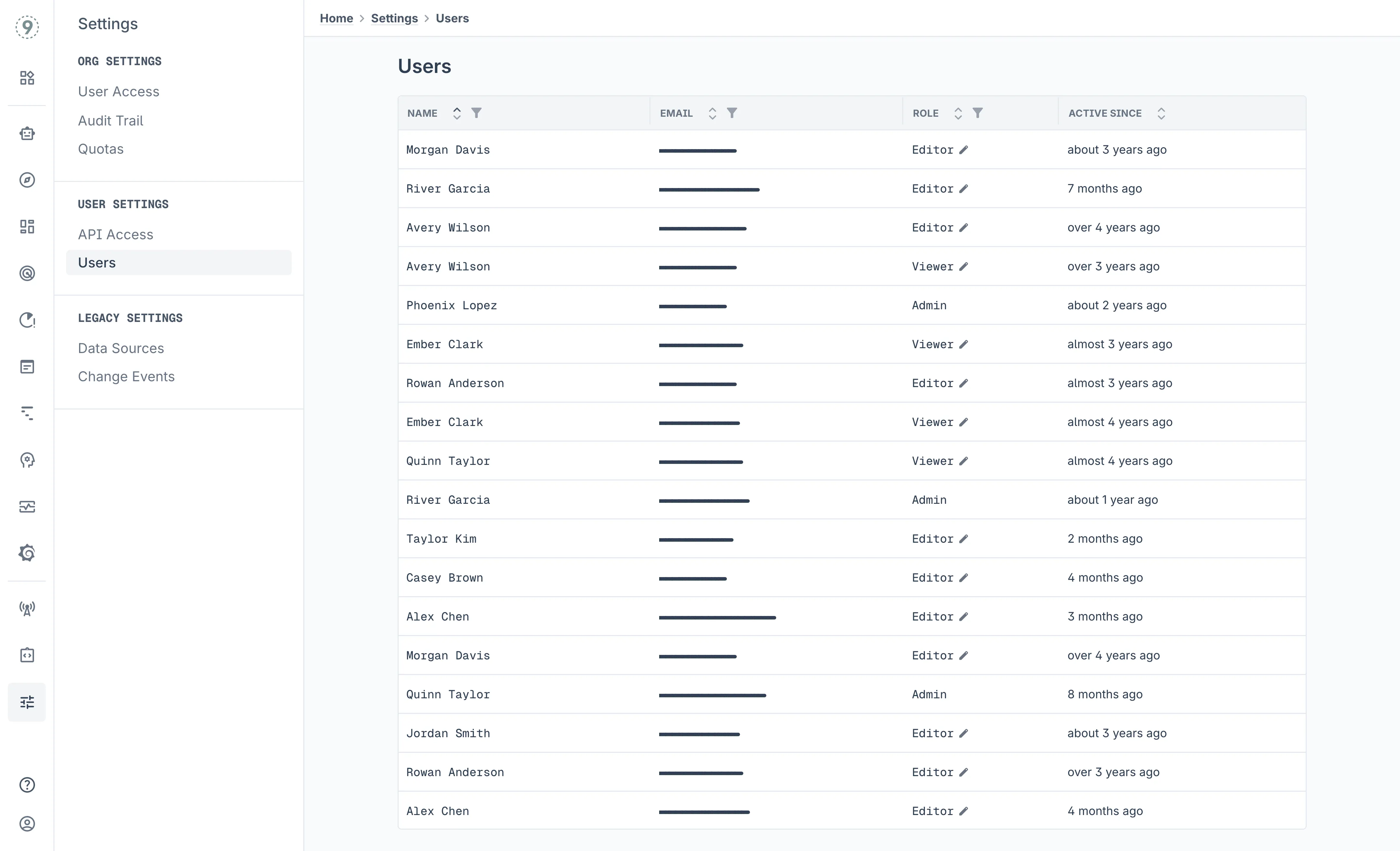User Roles
Manage user roles and permissions with role-based access control.
Last9 provides role-based access control (RBAC) to manage what users can do within your organization. While User Access controls who can sign up and access your account, the Users feature determines their permissions and capabilities.
Navigate to Users in Settings to view and manage user roles.

User Roles
Last9 supports three role types that determine what actions users can perform:
Admin
Admins have full access to all features and settings, including the ability to manage other users’ roles and organization settings. Only admins can change user roles. To change a user’s role to Admin or modify admin permissions, contact cs@last9.io.
Editor
Editors can create, modify, and delete resources across Last9. This includes creating dashboards, configuring alerts, managing SLOs, and performing all standard platform operations. Editor is currently the default role for new users joining your organization.
Viewer
Viewers have read-only access across the Last9 platform. This applies to both the web application and APIs. Viewers can:
- Browse dashboards and metrics
- View configurations and settings
- Access reports and analytics
Viewers cannot:
- Create, edit, or delete any resources
- Save changes to configurations
- Modify alerts, SLOs, or other platform settings
Note on embedded Grafana: Open source Grafana doesn’t include the enterprise role-based access control features. As a workaround, Last9 blocks viewers from saving any edits. When viewers attempt to edit dashboards in the embedded Grafana, they can make changes in the UI, but those changes won’t be saved to the server.
Managing User Roles

Only admins can update user roles. To change a user’s role:
- Navigate to Users in Settings
- Locate the user whose role you want to change
- Click the pencil icon next to their current role
- Select the new role (Editor or Viewer) from the dropdown

Changes take effect immediately, and the user will see updated permissions on their next action or page refresh.
Filtering and Sorting
The Users table provides filtering and sorting capabilities to help you manage larger teams:
- Filter by role: Click the filter icon in the Role column to show only Admins, Editors, or Viewers
- Sort columns: Click any column header to sort users by name, email, role, or when they became active
- Search: Use the search functionality to quickly find specific users
Understanding User Permissions
The combination of User Access and Users settings provides complete control over your Last9 organization:
- User Access determines which email addresses can sign up and access your account through allowlists or blocklists
- Users (this feature) determines what those users can do once they have access through role-based permissions
For example, you might use User Access to allow only users from your engineering team to sign up, then use the Users feature to give most team members the Editor role while assigning the Viewer role to stakeholders who only need read access.
Troubleshooting
Please get in touch with us on Discord or Email if you have any questions.